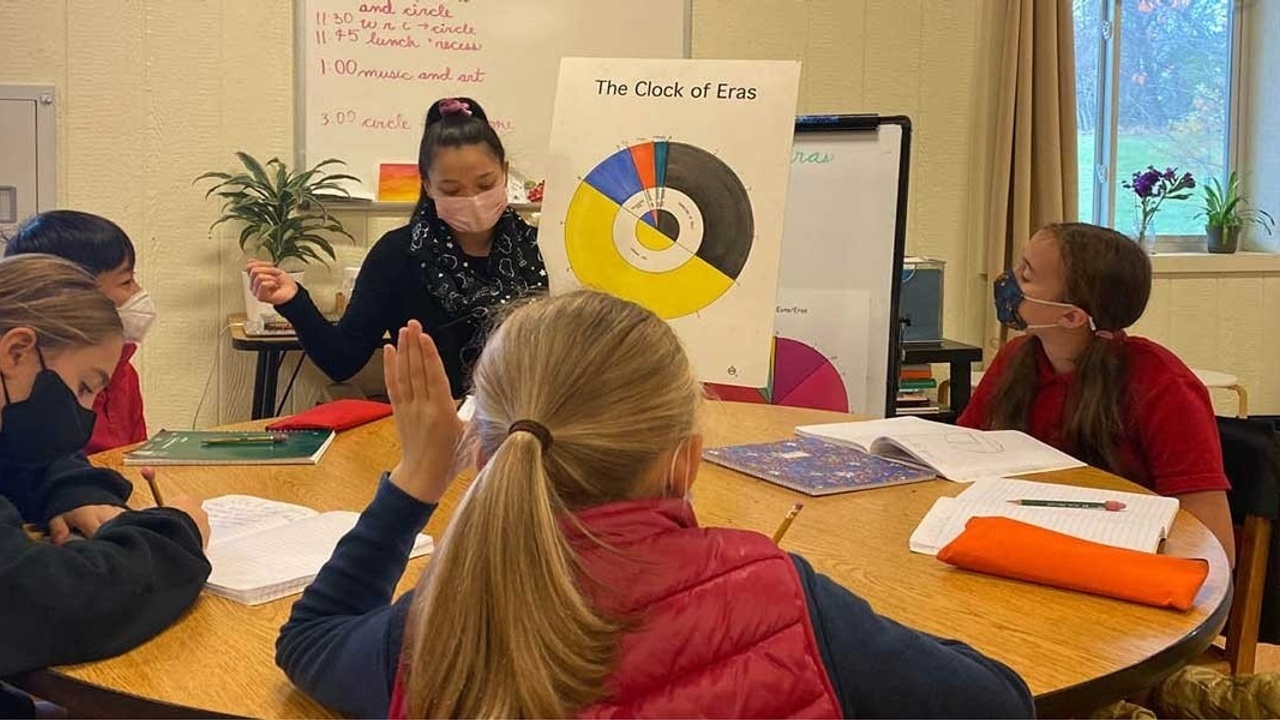
The Five Great Stories
Jan 22, 2022The five Great Stories are an important and unique group of stories that provide the Elementary children with a “big picture” of life and the world around them. The stories lead children to contemplate the past, discover the present, and imagine the future. At the same time, the children develop an awareness of the natural world and its laws, while also exploring the subject areas such as science, history, geography, math, and language. Learn more about Cosmic Education in this video.
 Ms. Blomgren telling the First Great Story
Ms. Blomgren telling the First Great Story
Geography
The first Great Story, the Coming of the Universe, proposes a vision of the reality and immensity of the universe and Earth's place within it. This story introduces the elements and the law and order that guide them. Each element plays an important role in our world and their unique combination prepared an environment unlike any other, a world ready for the first living creatures. This story serves as the foundation for astronomy, earth science, chemistry, and physics. In geography, children will explore the three states of matter, the formation of mountains, the relationship between the sun and earth, the solar system, as well as economic geography.

Biology
The second Great Story, the Coming of Life, introduces Biology. With the help of the Timeline of Life, this story offers children the framework and opportunity for exploring all life on earth – plants and animals. At the end of the story, we find an environment that has been beautifully prepared for human beings. In botany, children explore the needs of plants, the parts of the plants along with their functions and varieties, and plant classification. Biology topics also include the human body, zoology, and ecology.

History
The third Great Story is The Coming of Human Beings. Human beings have many responsibilities on the Earth, just like plants and other animals. This story reveals the gifts human beings have that separate them from other animals. We have a mind with great intellect and a heart for extraordinary love. We can imagine things that don't exist and love people we’ve never met! Human beings also possess a very special tool – the hand with an opposable thumb – which they have used to accomplish many amazing things. The third story serves as the foundation for history, social studies, and anthropology. Topics include the concept of time, the needs of human beings, ancient civilizations, and the exploration of cultures.

Language
The fourth Great Story, the Story of Communication in Signs, introduces language. With their special gifts and tools, human beings built up a tradition within the environment and altered the environment for their own needs. In order to do this, they needed a language. They needed a way to leave messages over great distances and even through time. They needed visible language. This story connects history with language and opens up the field of inquiry into language. Children explore the history of language, grammar and syntax, literature, the written language through cursive handwriting, and spoken language through interpretive reading and dramatic productions.

Math
The fifth and last Great Story, the Story of Numbers, introduces mathematics. A written language wasn’t enough for early human beings. They needed a different language for their measurements and inventions. This story helps the children appreciate the inventiveness of the human mind and its ability to respond to the specific needs of humans as a whole. It also helps them feel grateful to people who have contributed to human knowledge in the past. This story serves as the foundation for arithmetic, geometry, and algebra. Children explore topics such as numeration, operations (addition, subtraction, long multiplication, and long division), squaring and cubing, common fractions and decimal fractions, area and volume, and word problems.


